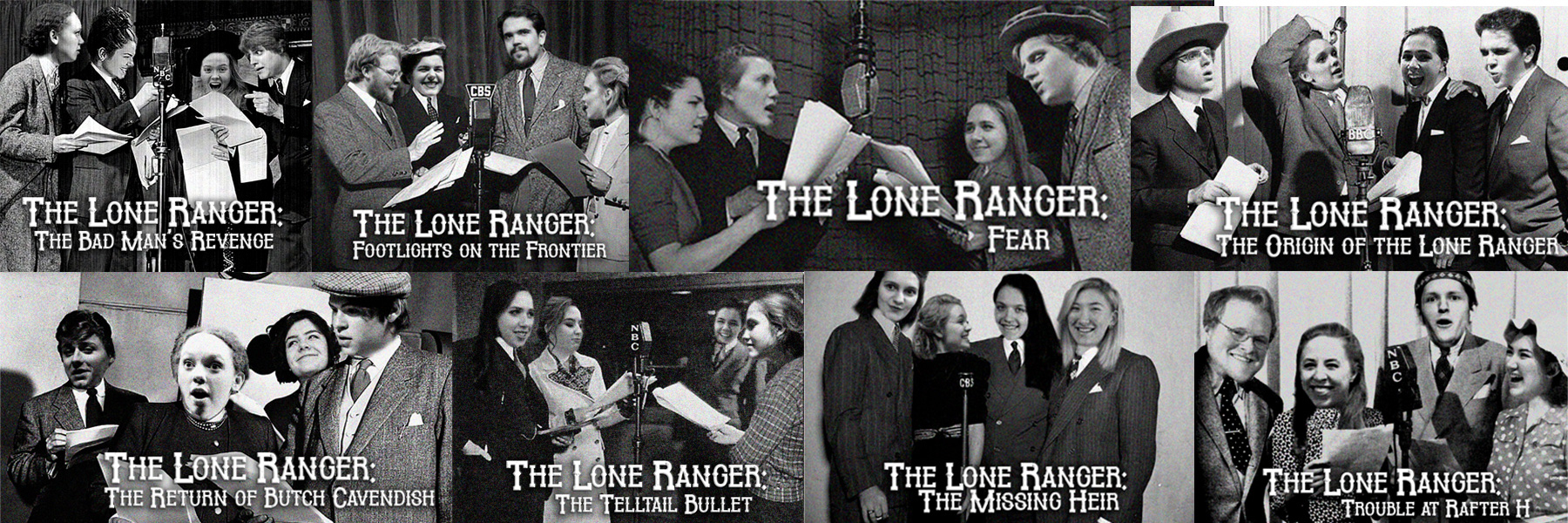Theatre Professors Peter Bloedel and Benji Inniger didn’t let the lack of live performances during the Spring 2020 semester keep their students from expressing their creativity. While Bethany’s classes were moved online due to the pandemic, three theatre classes: Directing I and Sound Design (taught by Inniger) and Vocal Interpretation (taught by Bloedel) collaborated to reproduce episodes of the original 1940s radio show The Lone Ranger.
Inniger explained more about how the collaboration was formed.
“When social distancing began, we were sad for the loss of spring performance opportunities like the Spring Play and the Directing Final Showcase. Those performances get a lot of students involved in various ways, and of course it was disheartening to see those opportunities evaporate.
“Vocal Interpretation and Sound Design seemed to be more feasible online, but I had initially no idea how to handle Directing without resorting to what I feel would be busy work. I talked to Pete [Bloedel] later that week and we hashed out a plan where the students could still produce something while staying connected.”
The collaboration was a first for Bethany Theatre.
Inniger continued, “To my knowledge, we’ve never had a cross-course collaborative assignment like this before, so that was neat to see multiple courses fulfill their new curricular obligations while working together to make something interesting.”
Inniger said he contemplated a variety of content options before deciding on The Lone Ranger. The idea was to find a production from the golden age of radio that was now in the public domain so that production rights did not pose a problem. He was surprised to discover many existing radio play transcriptions available. He ultimately chose the immediately recognizable Lone Ranger because it “would lend itself well to multiple dialects and character interpretations, had good potential for action and comedy, and had lots of opportunity for sound design.”
The students produced two recordings of each episode. One features the “original audio” tracks from each participating student; while the other is called a “vintage audio” track, and has been processed to sound like period recordings. Inniger decided to add the vintage option because the students recorded their performances over Zoom, and all had different computer/microphone setups with varying levels of quality. The resulting vintage sound gave a consistent quality to the productions. Judging by the final results, the learning objectives of both instructors were achieved.
Inniger explained, “Vocal Interpretation students needed to perform multiple dialects and create multiple characters, including one “invented” dialect of vocal affectations that don’t really exist in reality.
“The sound designers were given some resources, and truly had to design from the script, including actual sonic events in the script and some from their own imaginations. They made all of their sounds ahead of time, and were ready to embed them into the recordings when they were completed.
“Finally, I wanted the directors to have as close to a “normal” rehearsal process as possible, so they had to make and follow a rehearsal schedule, analyze and work on the script, work with their assigned sound design, and regularly rehearse like they would any other directing project, but over Zoom. When it came time to record, their performance had to be done in a single take: no stopping and starting, no splicing, just like a real theatre performance.
“Overall, I think it was a pretty decent substitute for a traditional final directing scene, or at least as close as we could make it.”
And Inniger noted that the students were happy with the process as well.
“During the process, I heard from many of the students involved that they looked forward to rehearsals and were glad to have a practical creative platform. When we moved online, it seemed like one of the things our students were missing most was the opportunity to simply be together and make stuff together.”
Inniger’s overall goal was to make sure Bethany students were receiving the best possible instruction in a virtual environment. And in the end, this untested collaboration in a virtual context actually mirrored the collaborative efforts that are a hallmark of a Bethany education.
Inniger explained, “In the liberal arts and the theatre major in particular, we constantly preach creative problem solving so despite the adverse circumstances, it was a unique chance to put that mantra into practice. We have such a social, collaborative, and tight-knit community of student artists and it was very sad to see that all get taken away from them on top of everything else that changed. My hope was this little project would help them stay connected, laugh, and find some joy and satisfaction of making something together while still completing their course objectives. I hope they all had a positive experience, and find it satisfying that despite everything, we can still present some kind of ‘performance’ this semester.”



